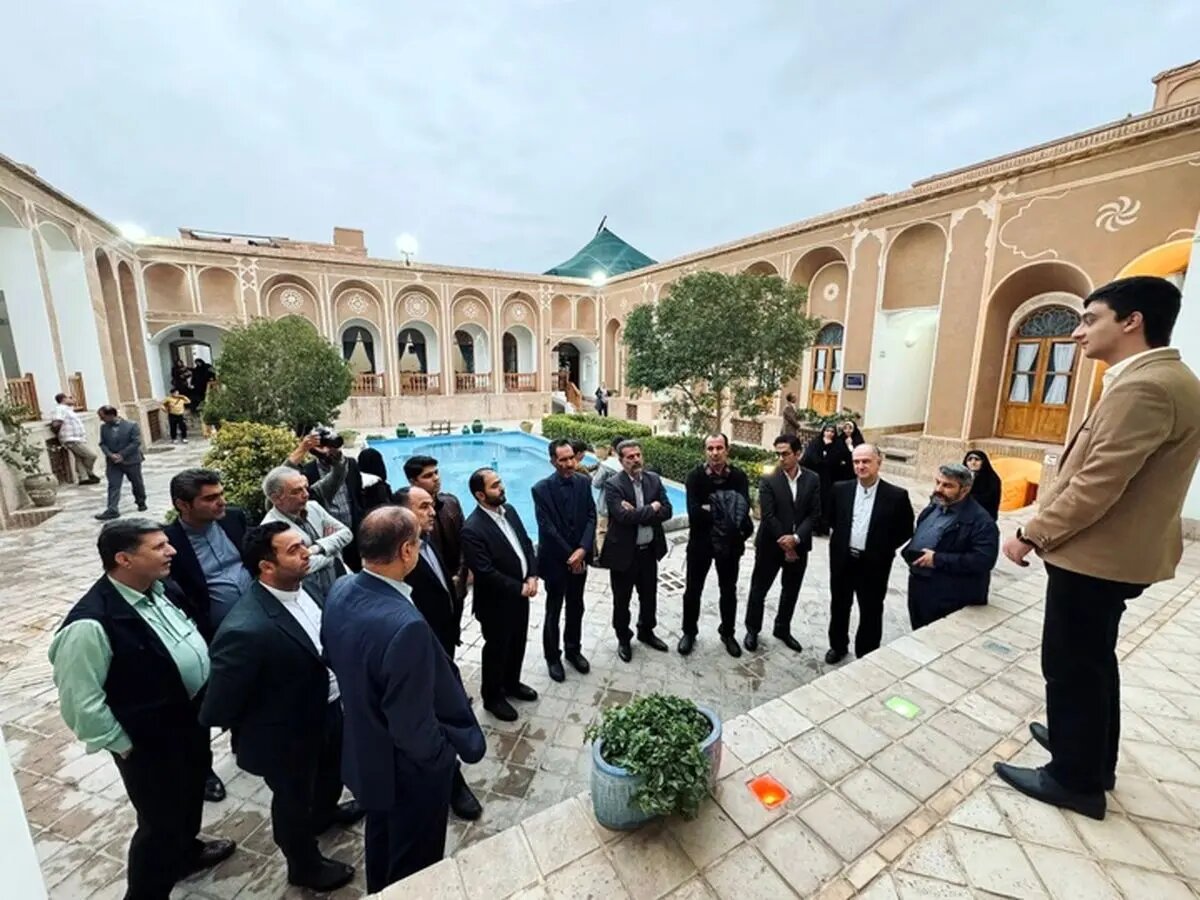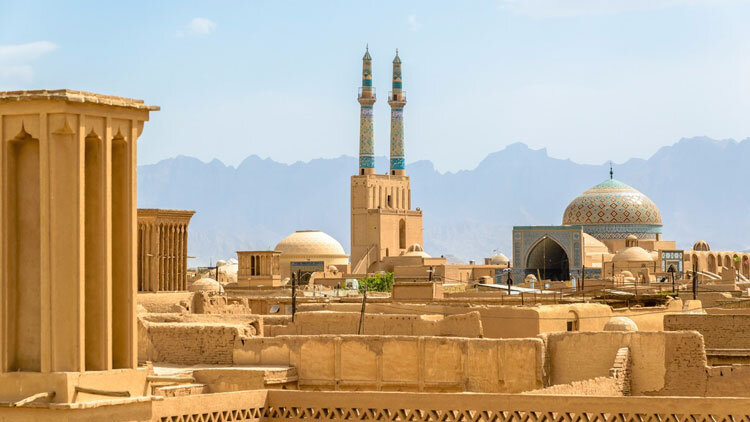MPs visit restorations of historical monuments in Yazd

TEHRAN – On Friday, the members of the Iranian Parliament’s internal affairs committee toured several historical monuments in Yazd currently undergoing restoration under the supervision of the Revitalization and Utilization Fund for Historical Places.
The visit aimed to assess the progress of restoration, revitalization, and private-sector partnerships in preserving architectural heritage, ILNA reported on Saturday.
During their visit, committee members were briefed on the ongoing restoration and handover process for these historical sites.
They emphasized the importance of such projects, describing them as tangible examples of heritage-based economic growth and essential for preserving Iran’s historical identity.
Among the structures visited by the members of the parliament were the historical Laleh Hotel, Namir Garden, Kashefi House, Alexander’s Prison, Honar House, Lari House, and the Fahadan complex.
Each of these locations has been restored or is in the process of restoration in collaboration with private partners, drawing admiration from the committee members, the report said.
During the visits, the managing director of the Revitalization and Utilization Fund, Shahab Talai-Shokri, provided an overview of the organization’s initiatives, noting that the Minister of Cultural Heritage, Tourism, and Handicrafts has prioritized accelerating restoration projects across the country.
In addition to these visits, the committee members explored the historical fabric of the UNESCO-designated city and its nationally and globally recognized heritage sites.
The MPs expressed appreciation for the city’s unique cultural and architectural contributions, the report said.
Earlier in September, the tourism minister Seyyed Reza Salehi-Amiri praised the “progress” made in the restoration and revitalization of historical buildings. “Current efforts are incomparable to the past and there have been some significant advancements.”
“The restoration and revitalization activities I observed in several provinces are on the right track,” Salehi-Amiri told Talai-Shokri in a meeting.
According to Talai-Shokri, the fund is currently involved in 154 projects, with 42 buildings under design, 50 in the process of restoration, and 62 already operational, managed by private sector investors.
The Fund (known by its Persian acronym SAABTA) provides the opportunity for privately owned businesses to run certain old structures to be maintained and repurposed into boutique hotels, traditional restaurants, or lodging places, among other businesses.
Iran hosts some of the world’s oldest cultural monuments, including bazaars, museums, mosques, bridges, bathhouses, madrasas, and gardens, as well as rich natural and rural landscapes, 28 of which have gained UNESCO World Heritage labels.
A don’t miss destination
In July 2017, the historical core of Yazd was named a UNESCO World Heritage site. Yazd is regularly referred to as a delightful place to stay, or a “don’t miss” destination by almost all of its visitors. The city is full of mudbrick houses that are equipped with innovative badgirs (wind catchers), atmospheric alleyways, and many Islamic and Iranian monuments that shape its eye-catching city landscape.
Cultural heritage experts believe that Yazd is a living testimony to the intelligent use of limited available resources in the desert for survival. Water is brought to the city by the qanat system. Each district of the city is built on a qanat and has a communal center. Furthermore, the use of earth in buildings includes walls and roofs through the construction of vaults and domes. Houses are built with courtyards below ground level, serving underground areas. Wind-catchers, courtyards, and thick earthen walls create a pleasant microclimate.

The historical core of Yazd is chockfull of mudbrick houses, bazaars, public bathhouses, water cisterns, mosques, synagogues, Zoroastrian temples, and centuries-old gardens. From the divine point of view, the city enjoys the peaceful coexistence of three religions: Islam, Judaism, and Zoroastrianism.
Yazd is home to numerous qanats which have supplied water to agricultural and permanent settlements for thousands of years. The man-carved underground qanat system relies on snow-fed streams flowing down the foothills of surrounding mountains. The earliest water supply to Yazd is estimated to date from the Sassanid era (224 to 651 CE). However, many others have been continually repaired and used over time, and most surviving Ab-Anbars (traditional mudbrick cisterns) can today be traced to the late Safavid and Qajar periods.
AM
Leave a Comment